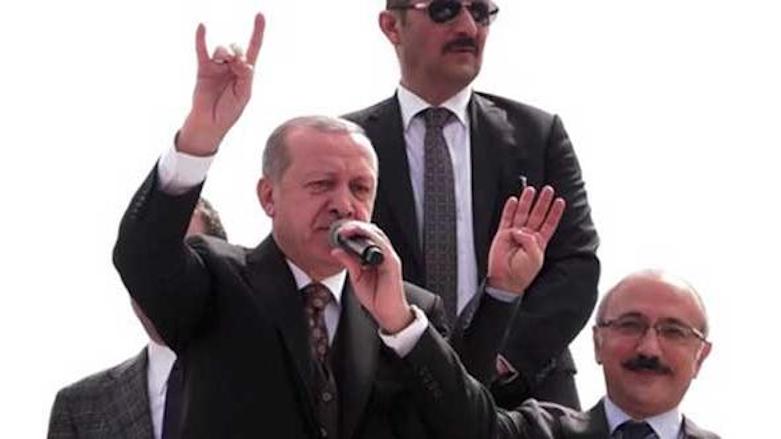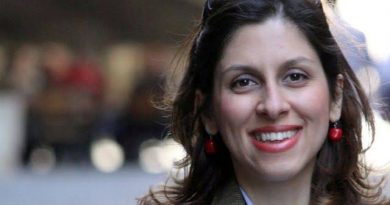OPINION: Turkey’s Erdoğan and Ataturk – The story of two faces and two legacies
Erdoğan’s goal is to establish a new legacy that will finally replace the century-old Kemalist legacy, which has crushed political Islam and forced it to operate underground
A century ago, the Ottoman Empire was dismantled. The glory had faded, the sultanate perished and the sultan gone. Everything in the sprawling empire was turned upside down. First of all, the empire no longer became an empire. It instead turned into a nation-state ruled by secular Kemalism, a philosophy laid down by the Turkish republic’s founding father Mustafa Kemal Atatürk. It’s the legacy upon which the new Turkish republic would be established for a century to come.
Throughout this period, Kemalism has ruled the country uncontested. Mustafa Kemal Ataturk was the Turks’ idol. The principles he laid out have continued to govern the country even posthumously. All those who dared to deviate from his line were severely punished. It has been the Kemalist legacy that ruled Turkey for nearly a century until President Recep Tayyip Erdoğan came to power in 2001.
Since then, he has been in charge of Turkey’s top job, whether as a prime minister or a president afterwards. Throughout his tenure, he has been slowly seeping through the state apparatuses, making slow-paced, nuanced and well-considered reforms aimed primarily to replace the Kemalist legacy with the Erdoğanist one.
Erdoğan has never said he is against Ataturk. Portraits of Ataturk are always put up at his public rallies and government offices. He has never embarked on a hard-power process of eliminating the Kemalist legacy. But instead, he pursued a gradualist approach coated in dissimulation (Taqiya) by alleging that Turkey is a secularist state toeing the line of Kemal Ataturk. At the same time, Erdoğan and his AKP team was working to erase this line, replacing it with Erdoğan’s.
Throughout his career, Erdoğan has experienced milestones and setbacks. He was fortunate. He reaped the benefits of the milestones: revoking the decision to ban hijab in public offices, expanding the building of religious schools, changing the state’s system of government from parliamentary to presidential, reopening Hagia Sophia as a mosque among others.
Erdoğan has always functioned not as a tyrannical strongman seeking to carve out his own position in Turkish modern history. Instead, Erdoğan’s goal is to establish a new legacy that will finally replace the century-old Kemalist legacy, which has crushed political Islam and forced it to operate underground.
For him, it’s a zero-sum game: either the Islamists continue to control and dominate the country, imposing their new legacy, or the Kemalist legacy survives, forcing Erdoğan and his comrades into hiding.
Therefore, Erdoğan has fought a ferocious battle that peaked in 2016 when some senior army commanders, purportedly in connection with the Gulen Movement, aka the Fethullahist Terrorist Organization (FETO), launched a failed coup d’etat. This coup was the apex. It’s either you or we. Erdoğan, on the other hand, has survived, launching a purge of the state apparatus to clear his authority of the ‘viruses’ purposely implanted to wipe away his rule overnight.
Erdoğan has devised a strategy to build this legacy. The longevity in office was the most important cornerstone of this plan. A ruler can do nothing unless he has long-term plans that he or his successors who share the same ideological line can put into action. As a result, Erdoğan has worked hard to ensure that his rule lasts as long as possible, modifying the country’s government structure to fill the role of president, but only after injecting it with the necessary legal powers—which were previously reserved for the prime minister under the now-dismantled parliamentary system.
From the very start of his political career, President Recep Tayyip Erdoğan has been taking aim at Ataturk—whether as a role model that he sought to emulate or as an opponent with a legacy that he sought to eliminate—as part of the above-mentioned two-faced approach.
For decades, Ataturk had been the Turks’ idol, and Erdoğan aspired to be the Turks’ new idol—at times by alleging that his project complements that of Ataturk and at others by declaring that his rule represents a resurrection of the Ottoman legacy that Ataturk had pulverized.
Among his both backers and rivals, Erdoğan is hailed as Turkey’s new sultan. Actually and ceremonially, he acts like a sultan. He receives world leaders with Ottoman-era honor guards.
Like his approach, Erdoğan’s legacy has also two faces. He is credited with the massive economic growth in Turkey as well as succeeding in getting the military out of politics after decades of strangling guardianship over the country’s politics.
Still, he is accused by critics at home and overseas of leaning heavily towards authoritarianism and repressing individual freedoms. According to Erdoğan’s rivals, the measures Erdoğan is taking—which are chiefly inspired by religious orientations—will see an increase whereas public freedoms will start to diminish. Some of Erdoğan’s opponents have even suggested that he wants to reinstate the caliphate though he doesn’t dare to announce this explicitly. Erdoğan, thus, has consolidated his power and changed the country’s system of government in order to sit himself on top of the Islamic world’s leaders—an objective that, among others, reverses Ataturk’s legacy.
Erdoğan’s allegations about following in the footsteps of the Turkish republic’s founder have remained unchanged. Meanwhile, however, he was working in full swing to profoundly transform the country he rules, taking it away from the Kemalist roots upon which it was established. Upon thwarting the military coup of July 15, 2016, Erdoğan took a major step towards setting up the system that best serves his interests. Within less than a year, Turkey saw a landmark referendum on changing the country’s system of government from the parliamentary to the presidential. Erdoğan was lucky. He won the referendum and finally got what he has long been seeking to achieve. This referendum, in which 51% of the voters favored the presidential system, put the country on the threshold of the second republic. The referendum has formally instituted a substantial change in the mode of governance that had prevailed in the first republic (Ataturk’s republic) a century ago.
Erdoğan has always been seeking to resurrect the sultanate that Ataturk had buried. He wants to be the country’s post-Ottoman—or neo-Ottoman—sultan. He wants to kill the legacy of Ataturk whose laws trampled on the sultanate and ushered in the new republic. Erdoğan’s two-faced approach— that depends on inwardly working to resurrect the old Turkish state while outwardly gushing praise upon the one who buried it—appears to be working. But now it’s the time to openly work to oust Ataturk’s legacy. The Turkish regime seems more consolidated, emboldened and entrenched. There’s no need for dissimulation.
If Erdoğan’s schemes proceed uninterrupted, we could witness ‘The Islamic Republic of Turkey’ sooner than we could ever expect. The bottom line: There are two conflicting legacies in Turkey as well as two faces of Erdoğan’s approach. And no one knows which legacy will finally prevail and which face will come out on the global stage and declare: Hey, this is the new Turkey.
Disclaimer: Views expressed by writers in this section are their own and do not reflect Milli Chronicle’s point-of-view.



